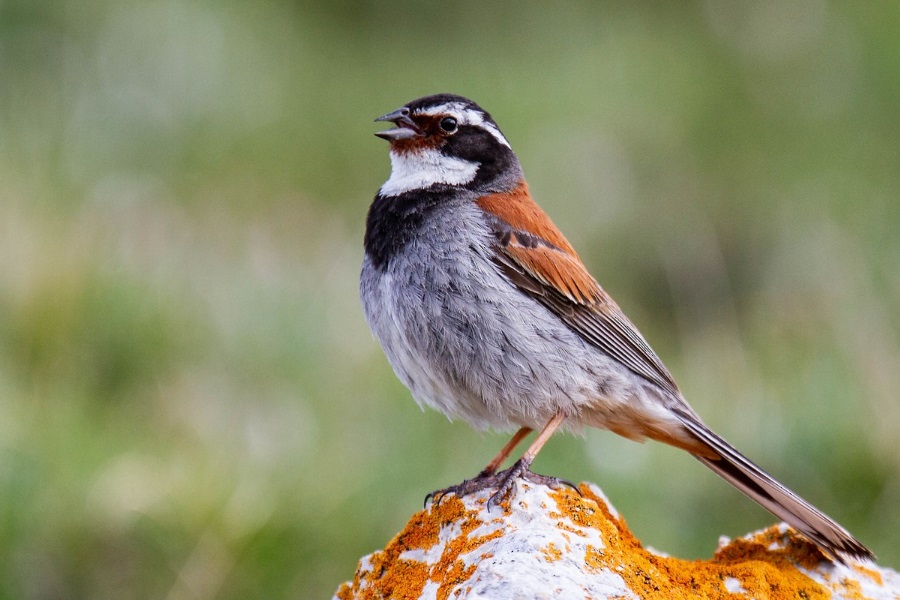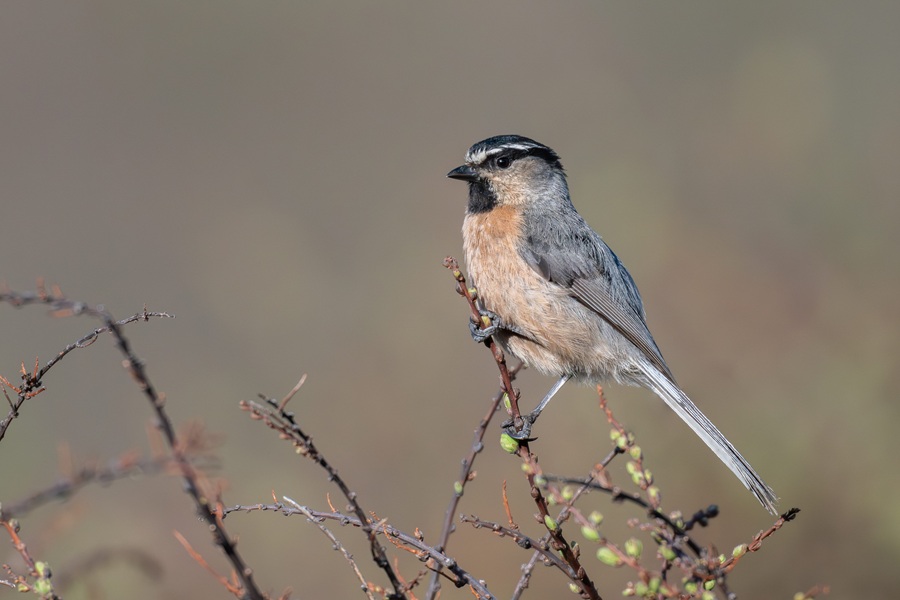China: Tibetan Plateau
Stunning wide-open landscapes with the world's best high-altitude birding! Starting in Tibet we search for Lord Derby's Parakeet and Tibetan Eared Pheasant, before heading into the remove central plateau where rarely-seen endemics like Buff-throated Monal-Partridge, Tibetan Babax, Prevalski's Redstart, Tibetan Bunting, Tibetan Rosefinch, and the mega Sillem's Rosefinch can all be found. Along the way, we should have multiple encounters with star birds like the monptypic Ibisbill and Przevalski's Finch, with a moderate chance of encountering Wild Yak amongst a good selection of other interesting mammals.
Next Dates
12 June - 27 June 2027 (16 days)
Leaders:
Daniel López-Velasco
Group Size Limit:
8
Single Room Supplement: $
500 USD
Deposit: $
750 USD
Price: $
5800 USD
Add a Title
Leaders:
Daniel López-Velasco
Group Size Limit:
Add a Title
Single Room Supplement: $
TBD
Deposit: $
TBD
Price: $
TBD
Add a Title
10 June - 25 June 2028 (16 days)
Leaders:
Joshua Bergmark
Group Size Limit:
8
Single Room Supplement: $
500 USD
Deposit: $
750 USD
Price: $
6100 USD
Add a Title
Leaders:
Joshua Bergmark
Group Size Limit:
Add a Title
Single Room Supplement: $
TBD
Deposit: $
TBD
Price: $
TBD
Add a Title
Despite travel to China sometimes being viewed with trepidation, foreign bird tours to the country have been running successfully throughout 2024 and 2025. Our participants experienced no issues obtaining visas, ground logistics are running smoothly, and the birding is excellent!
Accommodation:
Comfortable hotels and guesthouses throughout.
Walking difficulty:
Easy to moderate walking, but mostly above 3000m where everything is more tiring than usual. We will always be birding at a slow walking pace, and our elevation gradually increases as the tour progresses to help with acclimatisation.
Tour cost includes:
All accommodation, main meals, drinking water, internal flights (as stated in itinerary), overland transport, tips to local drivers and guides, travel permits, entrance fees, and guide fees.
Tour cost excludes:
Flights before and after the tour start/end, visa, travel insurance, tips to tour leaders, laundry, drinks, and other items of a personal nature.


Day 1: The tour begins this evening at Chengdu Tianfu International Airport (TFU), where we will overnight. Here, our ground agent will provide all the necessary permits to enter Tibet.
Day 2: Morning flight to Nyingchi, where we will begin our birding. This is the best area to search for the range-restricted Lord Derby's Parakeet, though it usually takes some effort to find! We should also encounter our first near-endemic Brown-cheeked Laughingthrush and Giant Babax, amongst some more widespread Himalayan species like Mrs. Gould's Sunbird, Black-headed Greenfinch and Pink-rumped Rosefinch. Overnight in Nyingchi (3000m).
Day 3: Morning birding in the area before driving west to Lhasa (5h). After dinner, some may choose to enjoy the vibrant local markets or take an evening drive to see Jokhang Temple. Overnight in Lhasa (3600m).
Day 4: Early visit to a monastery where Tibetan Eared Pheasant are tame and approachable! The area also holds specialties like Tibetan Snowcock, Tibetan Blackbird, White-browed Tit-warbler, Brown Accentor, and Streaked Rosefinch. Depending on the flight schedule, we will either spend the middle of the day visiting Potala Palace (one of the most awe-inspiring buildings in the world), or fly to Yushu. Overnight Lhasa or Yushu (3600m).
Day 5: Now deep in the centre of the Tibetan Plateau, Yushu itself is likely to provide our first flocks of Salim Ali's Swift swooping above the city. As we drive south to Nangqian (5h) through some truly grandiose scenery, we'll make several stops at river overlooks where we could see our first Ibisbill. Scrubby areas hold the endemic White-browed Tit and charismatic Ground Tit, while we will maybe see our first Great Rosefinch or Red-fronted Rosefinch. Raptors are sure to be in evidence, with Lammergeier, Himalayan Griffon, Upland Buzzard, and Saker Falcon all possible during our journey. Mammals are always in evidence on the plateau, so we'll watch out for our first Himalayan Marmot, Woolly Hare, Tibetan Fox, and Tibetan Gazelle. Overnight in Nangqian (3700m).
Day 6-7: Our two full days around Nangqian will focus on Kandashan Pass and Beizha Forest. The former hosts handsome high-altitudinal endemic Tibetan Bunting, one of the most exciting birds in this area. Birding at lower elevations, we will focus on Buff-throated Monal-Partridge, Tibetan Partridge, Tibetan Babax, Chinese Rubythroat, and the beautiful Crested Tit-warbler, but there is plenty more to see. Other birds might include Blood Pheasant, White Eared Pheasant, Snow Pigeon, Daurian Jackdaw, Giant Laughingthrush, Sichuan Tit, Grey-crested Tit, Sichuan Leaf Warbler, Tickell’s Leaf Warbler, Hume's Leaf Warbler, White-winged Grosbeak, Maroon-backed Accentor, and maybe the scarce Three-banded Rosefinch if we are lucky. Redstarts are particularly evident here: White-capped, Black, Hodgson's, White-throated, Daurian and Blue-fronted all likely! Overnights in Nangqian (3700m).
Day 8: The next few days require a lot of driving, crossing the vast expanse of open landscapes. Today we head for Qumalai (10h) for overnight. Wetlands along the way should produce Black-necked Crane, along with Bar-headed Goose and Ruddy Shelduck. Overhead, Common Redshank display while Pale Martin hawk for insects. Some high passes are always worth stopping at, as we look for Tibetan Snowfinch (aka Henri's Snowfinch), Black-winged Snowfinch, White-rumped Snowfinch, and Rufous-necked Snowfinch. Overnight Qumalai (4100m).
Day 9: Drive to Xidatan (7h) for overnight. Along the way, we will make some stops on the barren stony plains and walk around searching for one of our big targets, Tibetan Sandgrouse. Mammals will again be in evidence as we pass through Hoh Xil National Nature Reserve, with small herds of Kiang and Tibetan Gazelle both expected. Overnight Xidatan (4200m).
Day 10: Leaving predawn, the vehicles will take us deep into Wild Yak Valley. This will be a tough day, bumping for several hours over some rocky tracks before eventually dismounting at the high-altitude of 5000m and exploring a remote valley surrounded by boulder-strewn slopes. It is here that we hope to find Sillem's Rosefinch, one of Central Asia's most elusive and poorly-known endemics. It will of course require some luck to connect, but the species is regularly observed at this site. More common is the striking Tibetan Rosefinch (aka Roborovski's Rosefinch), plus we should also see the more widespread Blanford's Snowfinch and Brandt's Mountain Finch. We will backtrack to the highway in the afternoon, aiming to spot some genuine Wild Yak along the way. Overnight Xidatan (4200m).
NOTE: Any participants who do not feel up to this long day at such high elevation can opt to stay in the valley bottom for some more relaxed birding.
Day 11: Our last long drive of the tour, today we head east to Dulan (5h). We should be able to find Mongolian Ground Jay today, and maybe our first Mongolian Finch. There is also a chance for Goitered Gazelle if we keep our eyes peeled. Overnight in Dulan (3200m).
Day 12: Now exploring markedly different habitats, this morning in juniper-filled valleys of the Ala Shan Mountains we will search for both Przewalski’s Partridge and Daurian Partridge, along with the range-restricted Przevalski's Redstart. We could also see Wallcreeper, White-backed Thrush, Isabelline Wheatear, Desert Wheatear, Pine Bunting, Godlewski's Bunting, Chinese White-browed Rosefinch, and Himalayan Beautiful Rosefinch, before continuing east to Chaka (2h). This afternoon we will explore grasslands edging the vast Chaka Salt Lake, where we hope for Pallas’s Sandgrouse, Mongolian Lark, and Asian Short-toed Lark. Some more widespread birds might include Isabelline Shrike, Oriental Skylark, Horned Lark, and Rosy Pipit. Overnight in Chaka (3100m).
Day 13: In the nearby mountains, this morning we will focus on the monotypic Przevalski's Finch (aka Przevalski's Pinktail, which is very easy to see here), along with Güldenstädt's Redstart, Smoky Warbler, Robin Accentor, and Rufous-breasted Accentor. We can then revisit the grasslands this afternoon in search of any missing species. Overnight in Chaka (3100m).
Day 14: We'll drive early to the shores of Koko Nur (3h). This area gives our best chances for a few specialties like Tibetan Lark, Hume's Short-toed Lark, Mongolian Finch, the restricted-range Pale Rosefinch, and vocally-distinct "Margelanic" Lesser Whitethroat. We should also find ourselves some Tibetan Sand Plover in lovely breeding plumage, if we have not come across these somewhere else already! Overnight in Longyangxia (2700m).
Day 15: If still needed, we will visit the best area fo Pale Rosefinch this morning before continuing onwards to Xining (3h). Our afternoon at a reliable site near town should produce two extremely range-restricted breeders: Gansu Leaf Warbler and Qilian Bluetail. We might also add Przevalski’s Nuthatch, Chinese Nuthatch, Chinese Thrush, Plain Laughingthrush, Siberian Rubythroat, and Yellow-streaked Warbler. Overnight in Xining (2300m).
Day 16: Visiting Dong Xia or another nearby pine forest at dawn, we can focus on any missing species and perhaps locate the scarce Chinese Grouse (though this species is never guaranteed). The tour ends with departures from Xining International Airport in the late afternoon (XNN).
NOTE: We can also arrange a short extension to target Xinjiang Ground Jay and Tarim Babbler, which is done easily from Chengdu with three days before the tour. There is also potential after the tour to visit the remote north-east of China in search of Swinhoe's Rail, Band-bellied Crake, Von Schrenck's Bittern, Gray's Grasshopper Warbler, and Chinese Bush Warbler. Please let us know if either of these options are of interest at the time of booking!





































